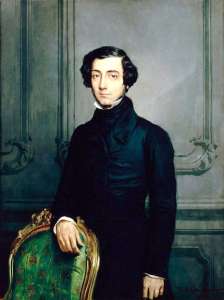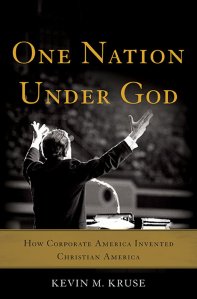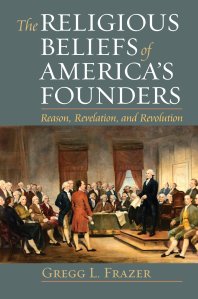Even though we’ve already been back in class for four weeks at Wheaton College, it’s still technically summer, and the weather was absolutely glorious here. I took the opportunity to spend a couple of hours earlier today on one of my favorite benches at Lake Ellyn Park, which is only five minutes by car from campus. That’s one of the perks of my job that I treasure—the opportunity to do at least part of my work while enjoying a view like the one below.
I was using the time to review for a class on race and ethnicity in U. S. history that I am co-teaching with my colleague, Karen Johnson. At Karen’s recommendation, one of the books that the students are reading is The Color of Christ, by historians Ed Blum and Paul Harvey. Just moments ago, I finished our first class discussion of the book. (There will be more.) It is a provocative book in more ways than one, and the discussion prompted me to re-post an essay that I shared nearly three years ago shortly after I first read The Color of Christ along with two other books that take a historical look at how Americans have “seen” Jesus over the past few centuries. All though I do not endorse them equally, I believe that all three books are cautionary tales with insights that we need to hear. I hope you’ll read on.
************************
In her book The Spiritual Practice of Remembering, Christian historian Margaret Bendroth observes the following:
Historical perspective should make us more humble and cautious about ourselves. People from the past were not the only ones operating within a cultural context–we have one, too. Just like them we cannot imagine life any other way than it is: everyone assumes that “what is” is what was meant to be.
What Bendroth is telling us is that we do not naturally think of the values that we hold (what we believe, how we think, how we behave) as influenced by the historical context in which we live. The beliefs of people in other times and places may strike us as peculiar, but not our own. No, our way of looking at the world strikes us (if we stop to question it at all) as obvious, self-evident, natural. Our way of thinking requires no explanation. It just is. It’s the deviations from our pattern that demand justification.
Reflecting on this very human trait always brings to mind an observation that my younger daughter made many years ago, when she was about four years old. To understand this illustration, you have to know that both my wife and I were born and raised in the South, and when we moved to Seattle (and the University of Washington) right after I finished graduate school, among the baggage that each of us took with us was a couple of substantial southern accents. My wife’s drawl was substantially moderated by several years of classical voice training, but I struggled (and to some degree, still do) not to sound like Gomer Pyle with a Ph.D., and our children, quite naturally, absorbed much of their parents’ speech patterns. And so for years after we settled in the Pacific Northwest, it was not uncommon for guests to our home to comment on our accents.
On one such occasion, our precocious four-year-old overheard a visitor talking about her daddy’s accent, and as soon as the opportunity presented itself, she tugged on my pants’ leg and pulled me aside to ask a question. “What’s an accent?” she asked, and I did my best to explain the concept. She seemed to follow my explanation, but she still looked troubled. “You don’t have an accent, Daddy,” she declared emphatically, her southern drawl reminiscent of molasses oozing across a plate. “You talk just like I do!”
One of history’s priceless benefits, potentially, is that it can help us see with new eyes what we would otherwise take for granted. It rattles our complacency, challenging us to think more deeply about the things we see as too self-evident to require explanation. By introducing us to people from other times and places who saw things differently, history can put our own values to the test. And in doing so, it makes it easier for us to fulfill the biblical injunction to “take very thought into captivity to the obedience of Christ” (II Corinthians 10:5).
Over Christmas vacation I read three related books that powerfully illustrate this benefit. This semester I am co-teaching for the first time a course on race and ethnicity in U. S. history, and with that course in mind, I picked up The Color of Christ: The Son of God and the Saga of Race in America (University of North Carolina Press, 2012), by Edward J. Blum and Paul Harvey. As the title suggests, the authors are interested in how Americans have imagined Jesus in racial terms over the course of U. S. history. (Was Jesus fair-skinned? dark complected?) Although focused specifically on attitudes about race, the book offers a convicting case study of the ways that cultural values inform–and often distort–the substance of our religious faith.
For broader context, I also read two other works of history that speak to this larger topic: American Jesus: How the Son of God Became a National Icon (Farrar, Straus, and Giroux, 2003), by Stephen Prothero; and Jesus: Made in America (Intervarsity Press, 2008), by Stephen J. Nichols. Both works echo The Color of Christ in documenting the myriad ways that Americans’ changing values over the centuries have influenced their religious convictions as reflected in their perceptions of the nature of Jesus.
 I don’t endorse each of these books equally. Prothero, professor of religion at Boston University, is the kind of public authority on religion who gets invited to appear on Oprah, The Daily Show with Jon Stewart, or the Colbert Report. These are not venues that typically promote deep reflection. American Jesus is an entertaining read, but maybe more clever than insightful. I couldn’t help suspecting that Prothero writes at times with shock value in mind. As he explains early on, when he refers to “Jesus” he does not mean the man from Galilee whom Christians believe to be the Son of God; rather, he has in mind the “American Jesus” (hence the title of the book), i.e., Jesus as Americans have perceived him. Whether their perceptions are true to who Jesus really was (and is) does not interest him, and it is not at all clear that he would even view the question as important. Perceptions of Jesus should change over time, he says. “Only dead religions stay the same; living faiths adapt continuously to changes in their environment.”
I don’t endorse each of these books equally. Prothero, professor of religion at Boston University, is the kind of public authority on religion who gets invited to appear on Oprah, The Daily Show with Jon Stewart, or the Colbert Report. These are not venues that typically promote deep reflection. American Jesus is an entertaining read, but maybe more clever than insightful. I couldn’t help suspecting that Prothero writes at times with shock value in mind. As he explains early on, when he refers to “Jesus” he does not mean the man from Galilee whom Christians believe to be the Son of God; rather, he has in mind the “American Jesus” (hence the title of the book), i.e., Jesus as Americans have perceived him. Whether their perceptions are true to who Jesus really was (and is) does not interest him, and it is not at all clear that he would even view the question as important. Perceptions of Jesus should change over time, he says. “Only dead religions stay the same; living faiths adapt continuously to changes in their environment.”
 The Color of Christ is a very different book. Published by a university press, its primary intended audience (I am inferring here) is readers within the academy. (Both authors work within the Academy themselves, Blum at San Diego State University and Harvey at the University of Colorado.) The prose is denser than Prothero’s, the tone far more serious. Blum and Harvey begin the book with a somber vignette: a sobering account of the 1963 bombing by white supremacists of the all-black Sixteenth Street Baptist Church of Birmingham, Alabama. In addition to taking the lives of four little girls, the dynamite planted by opponents of integration marvelously (miraculously?) also shattered the face of Jesus in the church’s stained-glass window. “In the blink of an eye,” Blum and Harvey write, “the prince of peace was made a casualty of race war.” The authors see the tragic episode as a kind of parable, underscoring how central images of Jesus have been to American understandings of race.
The Color of Christ is a very different book. Published by a university press, its primary intended audience (I am inferring here) is readers within the academy. (Both authors work within the Academy themselves, Blum at San Diego State University and Harvey at the University of Colorado.) The prose is denser than Prothero’s, the tone far more serious. Blum and Harvey begin the book with a somber vignette: a sobering account of the 1963 bombing by white supremacists of the all-black Sixteenth Street Baptist Church of Birmingham, Alabama. In addition to taking the lives of four little girls, the dynamite planted by opponents of integration marvelously (miraculously?) also shattered the face of Jesus in the church’s stained-glass window. “In the blink of an eye,” Blum and Harvey write, “the prince of peace was made a casualty of race war.” The authors see the tragic episode as a kind of parable, underscoring how central images of Jesus have been to American understandings of race.
 Jesus: Made in America is yet another kind of book with a different kind of emphasis. While Stephen Prothero breezily reviews how Americans of all races and creeds have thought about Jesus, and Blum and Harvey focus specifically on how a broad sampling of Americans have imputed racial characteristics to Jesus, Stephen Nichols is interested particularly in the perceptions of American evangelicals regarding the Man from Nazareth. An evangelical himself (a graduate of Westminster Theological Seminary and a professor of theology at Lancaster Bible College), Nichols writes openly to evangelicals as well as about them.
Jesus: Made in America is yet another kind of book with a different kind of emphasis. While Stephen Prothero breezily reviews how Americans of all races and creeds have thought about Jesus, and Blum and Harvey focus specifically on how a broad sampling of Americans have imputed racial characteristics to Jesus, Stephen Nichols is interested particularly in the perceptions of American evangelicals regarding the Man from Nazareth. An evangelical himself (a graduate of Westminster Theological Seminary and a professor of theology at Lancaster Bible College), Nichols writes openly to evangelicals as well as about them.
For all their differences in background and approach, all three works arrive at a core of strikingly similar conclusions. Taking the long view of American perceptions of Jesus over the past four centuries, the evidence is overwhelming that Americans–including American evangelicals–have allowed the values of their culture to influence significantly how they envision Jesus.
Focusing on American racial attitudes, Blum and Harvey conclude that, as Americans imagined visual images of Jesus (who began to become white in their minds’ eye in the early nineteenth century), “they made a sacred window through which they could see their hopes, fears, dreams, and conflicts in racial and religious forms.”
Reviewing American attitudes more broadly, Prothero observes, “In the book of Genesis, God creates humans in His own image: in the United States, Americans have created Jesus, over and over again, in theirs.” We have constantly imagined a Jesus who affirmed precisely the values we already hold, Prothero determines. From our particular vantage points, we have imagined him as manly and effeminate, ” a socialist and a capitalist, a pacifist and a warrior, a Ku Klux Klansman and a civil rights agitator.”
Nichols heartily agrees. The review of American evangelicals’ perceptions of Jesus over time demonstrates “the ways in which we have capitulated to our culture and have subjected Christ to our cultural predilections.”
Unlike the other two works, however, Nichols’ Jesus: Made in America seeks to edify as well as educate. Repeatedly, he challenges evangelical readers to find lessons in the story that he tells. If, after reading his book, we simply click our teeth in judgment of our ancestors for their blindness to the ways that they conformed to the culture, Nichols knows that he has failed. Rather, he wants us to see ourselves–at least potentially–in the pages he has written. He insists that his account should serve “as a parable for contemporary American evangelicals.” The trap that ensnared previous generations can capture us as well. What arrogance to think that we will be immune to the temptation to let the culture shape our faith! In this sense, the movement away from an orthodox understanding of Jesus across American history should make us fearful rather than judgmental.
In the course of his study, Nichols points to several aspects of evangelical belief that make us especially vulnerable to being conformed to the world without even knowing it. Rather than summarize his argument, I will recommend that you spend time with the book yourself. I can’t resist sharing one of the factors that he pinpoints, however: we ignore the past as a source of wisdom. This dismissive attitude toward history–what one specialist on American religious values has termed “historylessness”–“leaves American evangelicals more vulnerable than most when it comes to cultural pressures and influences.”
It’s a sobering assessment.

















